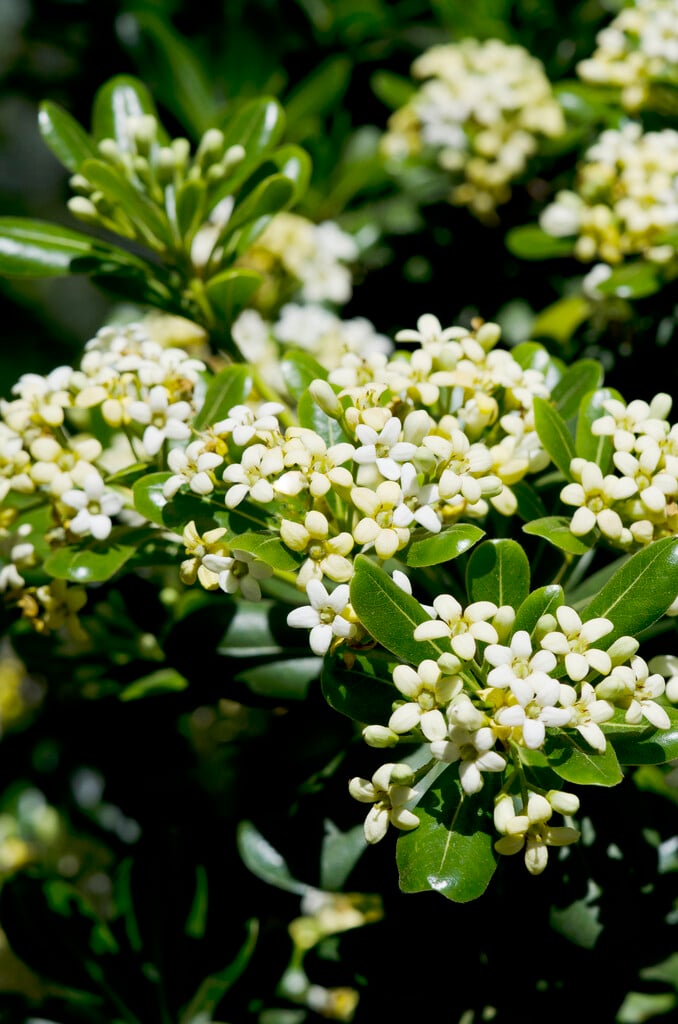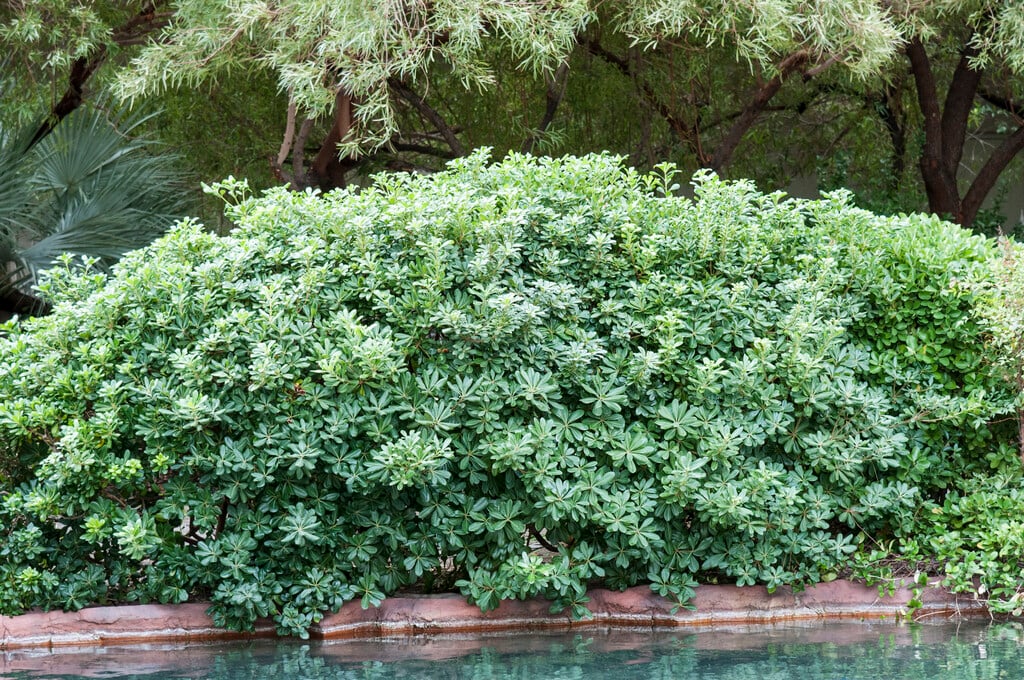Pittosporum tobira
Japanese pittosporum
A dense, broad, slow-growing medium-sized evergreen shrub with leathery, glossy, obovate leaves, and large terminal umbels of small sweetly-scented flowers opening white, soon turning yellow, in late spring and early summer
Size
Ultimate height
2.5–4 metresTime to ultimate height
10–20 yearsUltimate spread
1.5–2.5 metresGrowing conditions
Moisture
Moist but well–drained, Well–drainedpH
Acid, Alkaline, NeutralColour & scent
| Stem | Flower | Foliage | Fruit | |
| Spring | White Yellow | Green | ||
|---|---|---|---|---|
| Summer | White Yellow | Green | ||
| Autumn | Green | Brown Yellow | ||
| Winter | Green |
Position
- Full sun
- Partial shade
Aspect
West–facing or South–facing
Exposure
ShelteredDrought resistance
Yes Hardiness
H3Botanical details
- Family
- Pittosporaceae
- Native to GB / Ireland
- No
- Foliage
- Evergreen
- Habit
- Bushy
- Genus
Pittosporum are evergreen shrubs or trees with simple, leathery leaves and small, often fragrant, 5-petalled flowers, followed by spherical, woody fruits splitting to reveal seeds embedded in sticky pulp
- Name status
Correct
- Plant range
- Far East
How to grow
Cultivation
Grow outdoors in moist but well-drained soil in full sun. Protect from cold drying winds. Grow under glass in peat-free, loam-based compost in full light
Propagation
Propagate by seed or semi-hardwood cuttings
Suggested planting locations and garden types
- Mediterranean climate plants
- Low Maintenance
- Hedging and screens
Pruning
Pests
May be susceptible to glasshouse red spider mite, aphids, cushion scale and pittosporum sucker
Diseases
May be susceptible to powdery mildews, leafspot and honey fungus (rarely)
Love gardening
Sign up to receive regular gardening tips, inspiration, offers and more
View our Privacy Policy
Get involved
The Royal Horticultural Society is the UK’s leading gardening charity. We aim to enrich everyone’s life through plants, and make the UK a greener and more beautiful place.

